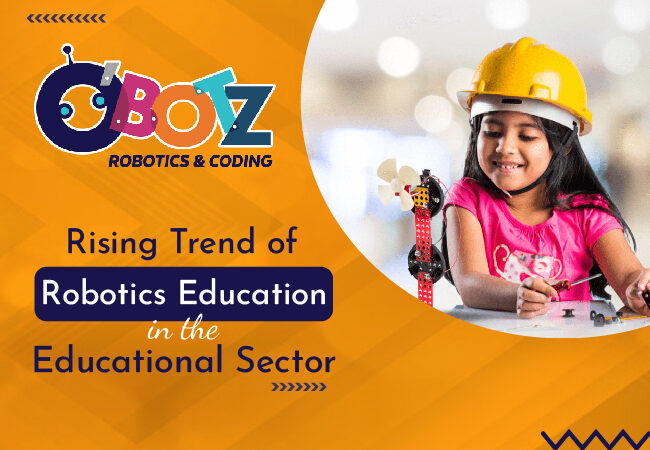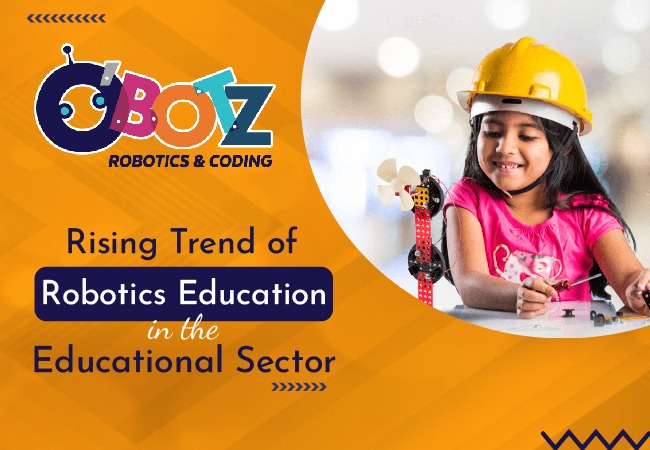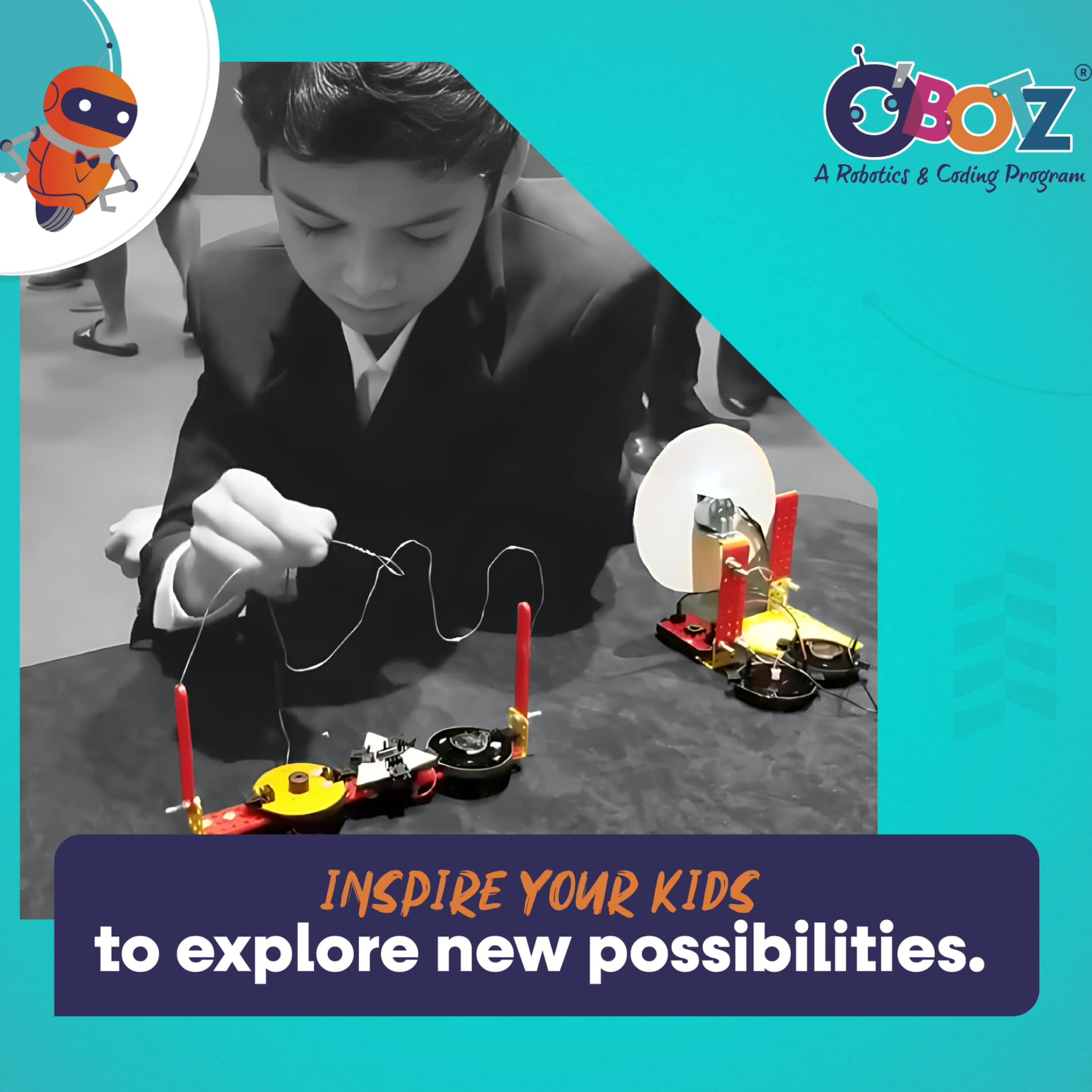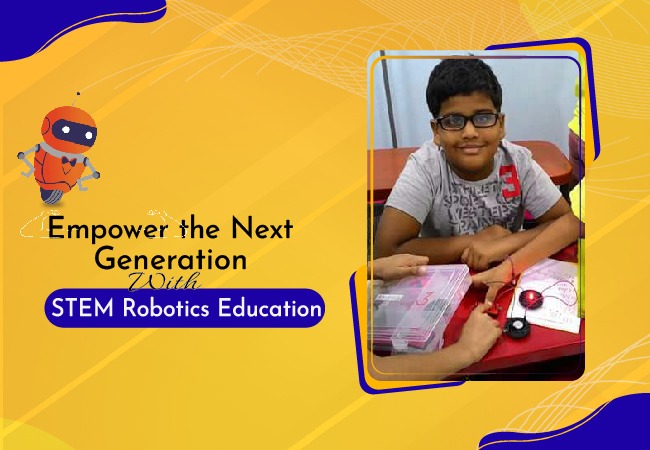Benefits of Robotics for Kids in Early Education
In today’s modern world, there is no second thought that robotics is a growing industry, but did you know that introducing that at a young age has many advantages?
Robotics isn’t just about building machines; it is a comprehensive educational tool that can enhance different aspects of a child’s development.
Robotics isn’t just about building machines; it is a comprehensive educational tool that can enhance different aspects of a child’s development.
In this blog, we explore the key benefits of integrating robotics into children’s education and how it can lay a good foundation for your child’s bright future.

Developing STEM skills
To build a strong foundation in science and math
One of the most important benefits of robotics for kids is their ability to increase STEM (Science, Technology, Engineering, and Math) skills in children.When children engage with robots, they learn basic concepts in physics, mathematics, and engineering.
Building a robot, for example, requires an understanding of basic principles of geometry, such as faces and shapes, as well as physics concepts, such as balance and motion.
These hands-on experiences make these abstract concepts tangible and accessible.
Develop organizational skills
Programming is an important part of robotics.Through coding, children learn to control their robots to perform specific tasks.
This event teaches logical thinking and problem solving skills.
Languages like Scratch, Blockly and even Python can be introduced in child-friendly formats, allowing children to see immediate results from their programming efforts.


It fosters creativity and innovation
Encourage Creative Thinking
An Introducting of Robotics for Kids is one of the best ways to foster creativity in children.When children design and build robots, they are free to experiment and create new things.
They can come up with unique ideas in terms of designs and functionalities, exploring their creativity in the process.
This freedom to innovate helps children think outside the box and develop a love for creation and invention.
Problem Solving And Critical Thinking
Every robotics project presents its own set of challenges.Kids must figure out how to make their robots move, react, or perform certain tasks.
This requires critical thinking and problem-solving. When they come across these kinds of obstacles, they learn to troubleshoot and improve their own designs.
This process of trial and error teaches endurance and perseverance, valuable skills that extend beyond the world of robotics.
To Foster Teamwork And Cooperation
Working As A Team
Many robotics projects are team-based, that encourages team work among peers.When children build and program robots together, they communicate better, share ideas, and divide tasks.
This shared environment helps them develop their social skills and learn the value of teamwork.
Learning From Others
By working within a team, children can learn a lot from each other.They realize that a group of colleagues is teaching a problem differently and adopt new methods themselves.
This exchange of ideas creates a collaborative learning environment where children can grow together.
Building Confidence And Self-Esteem
Achieving Goals
Designing and programming robots gives kids a sense of accomplishment.These accomplishments, big or small, boost their confidence and self-esteem.
They learn that they can set goals, work towards them and achieve them, which is a powerful lesson for a young mind.
Overcoming Challenges
Robotic work often comes with its fair share of challenges.By overcoming these obstacles, children learn to face challenges head-on and not give up easily.
Such situations often build confidence and prepare them for future challenges in any field.
Preparing For The Future
Future-ready skills
Integrating robotics into early childhood education prepares children for the future.As technology continues to grow, the demand for skills in robotics, programming, and engineering will also grow.
By learning these skills early, children are better prepared for future careers in STEM fields.
Adapt to technological advances
Early exposure to robotics helps children become comfortable with technology.They learn to adapt to new tools and platforms, making them more flexible and expert at learning new technologies as they grow.
This flexibility is an essential skill in our ever-changing technological landscape.
How to Get Started with Robotics
Choosing the Right Robotics Institute
Choosing the right robotics institute is important to your child’s success.Look for organizations like O’Botz that offer age-appropriate classes, experienced teachers and hands-on learning opportunities.
Review research and ask for recommendations to ensure that the organization provides a supportive and enriching environment for young students.
Encouraging Research And Experimentation
Encourage children to explore and experiment with their own robotic projects.Let them lead, make mistakes and learn from them.
This freedom of exploration will nurture their curiosity and increase their love for learning.
Conclusion
Learning robotics at an early age offers many benefits from developing STEM skills and enhancing creativity to enhancing teamwork and increased confidence .
By integrating robotics into children’s education and encouraging research and experimentation among children, and by choosing the right robotics institute like O’Botz, we can give kids the Robotics Kit they need to succeed in a technology driven world it is in the work.
By integrating robotics into children’s education and encouraging research and experimentation among children, and by choosing the right robotics institute like O’Botz, we can give kids the Robotics Kit they need to succeed in a technology driven world it is in the work.





































